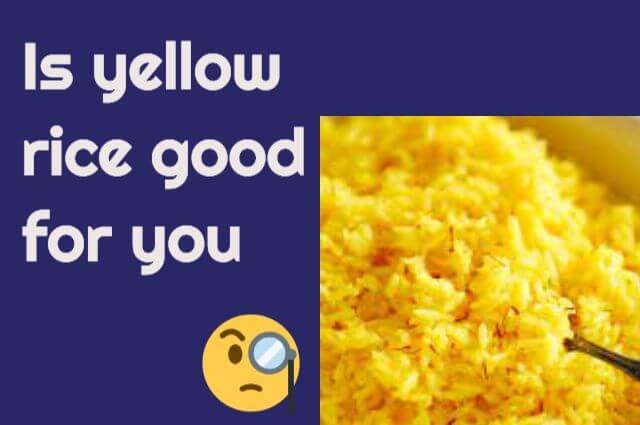In recent years, there has been a debate over “Is yellow rice good for you”. Some people believe yellow rice is a healthier alternative to white rice, while others believe it is not as healthy as white rice. Here, we will take a look at the pros and cons of yellow rice to help you decide if it is right for you.
Table of Contents
Introduction: what is yellow rice?
Yellow rice is a type of rice that has been dyed with turmeric, giving it a characteristic yellow color. It is popular in many Asian cuisines, especially Indian and Thai. While yellow rice is not necessarily more nutritious than other types of rice, it does have some health benefits. Turmeric, the spice that gives yellow rice its color, is a powerful antioxidant with anti-inflammatory properties. This makes yellow rice a good choice for people who are trying to reduce their risk of chronic diseases such as heart disease and cancer.
The nutrients in yellow rice
Yes, yellow rice is good for you because it contains nutrients like magnesium, potassium, and vitamin B6. These nutrients are important for maintaining a healthy heart, preventing diabetes, and reducing inflammation.
Yellow rice is also a good source of fiber, which helps to regulate digestion and keep you feeling full longer. Fiber is an important nutrient for weight loss and management because it helps to slow down the digestive process and prevents blood sugar spikes after meals.
Overall, yellow rice is a nutritious and healthful food that can be enjoyed as part of a balanced diet.
The benefits of yellow rice
There are many benefits to yellow rice. First, it is a good source of vitamins and minerals. It is also high in fiber and low in fat. Additionally, yellow rice has been shown to help regulate blood sugar levels and improve digestion. Finally, yellow rice is a great way to add flavor to your meals without adding calories.
The drawbacks of yellow rice
There are some drawbacks to yellow rice. For one, it is not as nutrient dense as other types of rice. It also has a higher glycemic index, which means it can cause your blood sugar to spike if you eat too much of it. And finally, some people find that it can cause indigestion.
Conclusion: is yellow rice good for you?
The bottom line is that yellow rice is good for you. It is a source of complex carbohydrates, which are an important part of a healthy diet. Yellow rice also contains vitamins and minerals, including iron and magnesium.
Frequently Asked Questions
What color is the healthiest rice?
The healthiest rice is brown rice.
What is the healthiest type of rice?
Basmati rice is the healthiest type of rice. It is a long grain, aromatic rice that is light and fluffy. Basmati rice is a good source of thiamin, niacin, and vitamin B6.
Is yellow rice natural?
Natural yellow rice does not contain any added coloring. The rice gets its yellow color from turmeric, an orange-colored spice that is commonly used in Indian cuisine.
Is yellow rice good for high blood pressure?
There is no definitive answer to this question as different people may have different opinions. Some people may believe that yellow rice is good for high blood pressure, while others may not. Ultimately, it is up to the individual to decide whether or not they believe yellow rice is good for high blood pressure.
Is yellow rice good for high cholesterol?
There is no definitive answer to this question as different people may have different opinions. Some people may believe that yellow rice is good for high cholesterol because it contains fiber and other nutrients that can help to reduce cholesterol levels. Others may believe that yellow rice is not as effective in reducing cholesterol levels as other foods or methods. Ultimately, it is up to the individual to decide whether or not they believe that yellow rice is good for high cholesterol.
What is Lundberg Organic Rice Jasmine Brown 32 Oz
Lundberg organic rice jasmine brown 32 oz is an organic brown rice that has been grown and harvested in accordance with the guidelines set forth by the United States Department of Agriculture (USDA). The rice is then milled and packaged at a certified organic facility.
